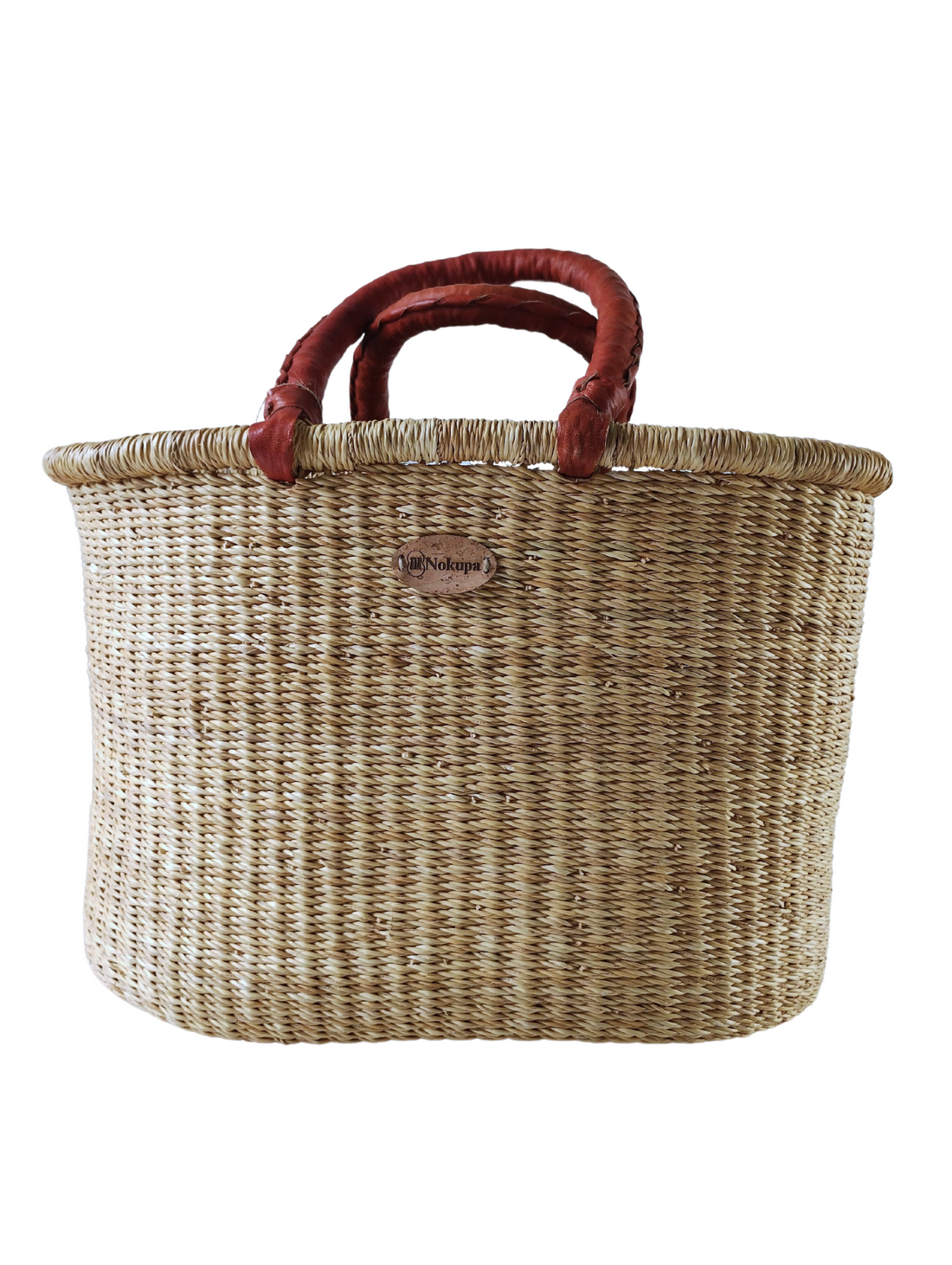
Bolga baskets, also known as elephant grass baskets, have become synonymous with both beauty and functionality. These exquisite woven baskets hail from the Bolgatanga region of Ghana, where they are meticulously crafted by hand using time-honored techniques passed down through generations. Not only are these baskets a testament to the rich cultural heritage of the region, but they are also a shining example of sustainable craftsmanship.
In this blog post, we’ll delve into the fascinating history of Bolga baskets, exploring their origins, the materials used, and their significance in both local and global contexts.
Origins of Bolga Baskets
The story of Bolga baskets begins in the Bolgatanga region, located in the Upper East Region of Ghana. The name "Bolga" is derived from the capital city of the region, Bolgatanga, which has long been a hub for basket weaving in Ghana West Africa. The tradition of weaving these elephant grass baskets dates back centuries, rooted in the everyday needs of the people in this rural region.
Historically, the people of Bolgatanga relied on basket weaving as a practical solution for storing and carrying goods, such as crops, water, and personal belongings. The arid climate of the region made farming challenging, so the skill of weaving became an essential supplementary activity that provided both utility and a means of income. Over time, these baskets evolved from simple storage containers into beautifully crafted items that reflected the creativity and artistry of the weavers.

The Craftsmanship Behind Bolga Baskets
One of the defining features of Bolga baskets is the material used in their creation: elephant grass. Also known as “vetiver grass” or “veta vera,”. Elephant grass is a tall, tough, and resilient grass native to the region. The grass is harvested and then dried in the sun to achieve the desired durability and flexibility. Once dried, the grass is split into thin strips and dyed using natural plant-based dyes, which contribute to the vibrant colors that are characteristic of these baskets.
The weaving process itself is labor-intensive and requires a high level of skill. Each basket is crafted by hand, with artisans often spending several days to complete a single piece. The intricate patterns and designs are a reflection of the weaver's skill and creativity. The techniques used to create these patterns are passed down through generations, with each weaver adding their unique touch to the traditional designs.
Significance of Bolga Baskets in African Culture
Bolga baskets, or African elephant grass baskets, hold significant cultural value in the communities where they are made. They are not just functional items but also symbolic of the identity and heritage of the Bolgatanga region. The baskets are often used in important cultural rituals and ceremonies, such as weddings and harvest festivals, where they are given as gifts or used to carry offerings.
In addition to their cultural significance, Bolga baskets play a vital role in the local economy. The weaving of these baskets provides a source of income for many families in the Bolgatanga region, particularly for women, who make up the majority of the weavers. By selling their baskets in local markets and to international buyers, these artisans are able to support their families and contribute to the economic stability of their communities.
Global Popularity and Impact
In recent decades, Bolga baskets have gained popularity far beyond the borders of Ghana. Their unique designs, vibrant colors, and sustainable nature have made them highly sought after in global markets, particularly in Europe and North America. These baskets are often used as decorative items in homes, as fashionable accessories, or as eco-friendly alternatives to plastic bags.
The global demand for Bolga baskets has had a positive impact on the weavers and their communities. Organizations and fair-trade initiatives have helped to promote the baskets internationally, ensuring that the artisans receive fair compensation for their work. This has not only improved the livelihoods of the weavers but has also helped to preserve the traditional craft of basket weaving for future generations.
Sustainability and Environmental Benefits
One of the key reasons for the growing popularity of Bolga baskets is their sustainability. Elephant grass, the primary material used in these baskets, is a renewable resource that grows abundantly in the region. The use of natural dyes and traditional weaving techniques means that the production of these baskets has a minimal environmental impact. Unlike plastic or synthetic materials, elephant grass baskets are biodegradable and do not contribute to pollution or waste.
Moreover, the global interest in Bolga baskets has encouraged the continuation of sustainable practices within the local communities. By supporting the production and sale of these baskets, consumers are helping to promote environmentally friendly products and reduce the demand for non-renewable materials.
Conclusion
The history of Bolga baskets is a rich tapestry of tradition, craftsmanship, and sustainability. These beautiful African elephant grass baskets are more than just functional items—they are a symbol of the cultural heritage of the Bolgatanga region and a testament to the skill and creativity of the artisans who make them. As these baskets continue to gain popularity worldwide, they serve as a reminder of the importance of preserving traditional crafts and supporting sustainable practices that benefit both people and the planet.

